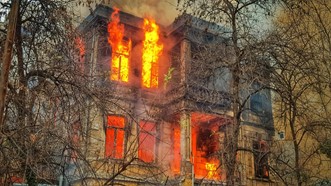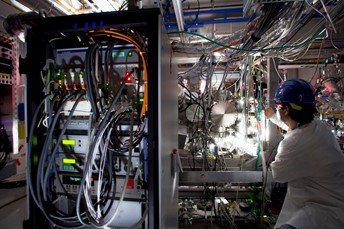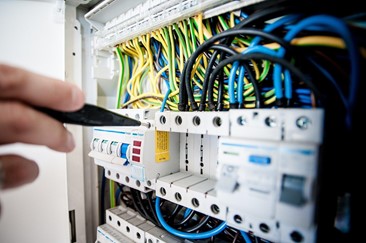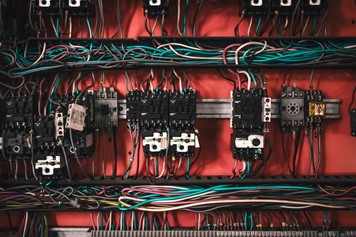
Benefits of Low Smoke Zero Halogen Cables
Low smoke zero halogen cables are made with a special thermoplastic jacket. The use of thermoplastic or thermosetting compounds makes this type of insulation exceptionally flame retardant. Low Smoke Zero Halogen materials are most often used when both fire safety and reliability are critical. Low smoke zero halogen Cables are ideal for confined spaces where poor ventilation could be a serious concern. HFFR or halogen-free flame-retardant cables are cables with special ethylene copolymer blends for jacketing, which provide similar safety benefits as LSZH. For the purposes of this article, we will equate LSZH with HFFR materials.
‘Low smoke’ features

In dense urban areas with tunnels full of cable wiring, fire can pose a significant risk, according to Science Direct. It is a well-known fact that the most dangerous component of a fire in its early stages is not the flame but the smoke. In areas with limited ventilation, rapid accumulation of smoke can quickly lead to casualties. Even if ventilating systems are present, heavy smoke greatly diminishes visibility and can conceal exits and escape routes.
Low smoke zero halogen Cable is a low-smoke jacketing material that produces little to no smoke when exposed to fire. It is composed of thermoplastic compounds that give off no or minimal amounts of white smoke when exposed to high temperatures. Cables made with low smoke zero halogen compounds offer excellent physical and electrical insulation, along with superior flame-retardant properties.
‘Zero halogen’ features
The burning of common jacketing materials produces high amounts of toxic and/or corrosive gases. Most standard cables have halogens such as chlorine, bromine, and iodine in their jacketing. When this sheathing material burns, it produces toxic chemical gases that are dangerous to your health and can cause suffocation. These noxious gases can also combine with water, such as the extinguishing water used by firefighters or moisture within a person’s airways, to form corrosive acids. Inhaling these toxic fumes can cause permanent damage to the throat and lungs and lead to complex respiratory problems.
On the other hand, Low smoke zero halogen cables do not contain halogens in their jacketing and therefore produce significantly lower amounts of harmful gases and chemicals when burning. While some gases are still released when the sheathing material is exposed to high temperatures, these are not toxic and do not produce corrosive fumes. Another benefit is that LSZH cables are composed of materials that are environmentally safe.
The difference between PVC and LSZH cables
PVC (polyvinyl chloride) jacketed cables are modified with plasticizers to add certain features and characteristics. While PVC generally has very good flame retardancy, it can still emit smoke and toxic gases upon burning. Because of the lack of standardization, there are variations in the fire retardation properties of PVC cables. Different manufacturers use a range of different additives or a combination of them to lower costs while meeting the installation requirements.

Low smoke zero halogen cables, as the name suggests, produce little to no smoke or toxic gases when exposed to heat or flames. LSZH jacketing materials also go through a robust battery of tests before they are approved for industrial or commercial use. These tests evaluate characteristics including electrical properties, flame propagation, smoke measurement, and halogen content measurement.
Additionally, cables made with low smoke zero halogen compounds are physically quite different from PVC cables. The presence of these compounds in the sheathing makes LSZH cables more rigid, whereas PVC cables are typically softer.
Improved fire safety with LSZH Cables
Low smoke zero halogen Cables are particularly suited for use in confined spaces where people or sensitive electronic equipment are present. The classical examples of such spaces are submarines, aircraft, tanks, and rail carriages, which is why the military was one of the first groups to take up the widespread use of LSZH cables. In addition to being the standard practice for cabling in the armed services, LSZH cables are also in demand for central offices and other sites with extensive cabling needs.
Low smoke zero halogen Cables do not emit toxic gases and maintain visibility even in restricted spaces. They also ensure the smooth functioning of electrical devices that may be susceptible to damage from corrosive gases and fumes. Moreover, LSZH cables are self-extinguishing and inhibit the spread of flames to a larger area.
Specifications
- Better tensile strength (greater than 1.2 Kgf / mm2)
- Improved resistance to weathering (~30° C to 105° C)
- Enhanced softness (80-90 hardness)
- Non-shifting (no moving morphic)
- High-volume resistivity (greater than 1016 Ω / cm3)
- Responds well to high voltages (up to 15 kV)
- Good elasticity and adhesion
The tests measuring these specifications are conducted under laboratory conditions. The particular values may not be replicated in commercial installations because of external factors.
It is also possible to order custom-made cables that improve on one or more of these properties based on project requirements.
LSZH cable applications
LSZH cabling is routinely used in places with limited ventilation, a high concentration of personnel, or low air density. Mass transit facilities and underground tunnel systems also necessitate the use of LSZH cables. Low smoke zero halogen Cables are routinely used in Europe, but their adoption in the U.S. has been slower due to stringent regulations. Locations that benefit the most from the installation of LSZH cables include:
- High-rise buildings
- Hospitals
- Server/data centers
- Communication and broadcast facilities
- Public underground settings
- Nuclear power stations
- Oil platforms
- Aerospace, railroad, and maritime applications
LSZH jacketing can be used to fabricate nearly any type of cable or wiring. Cables that use LSZH insulation and sheathing most frequently include:
- Instrumentation cables
- Broadcast audio/video cables
- Power and data cables
- Transportation cables
- Automation cables
- Communication/Ethernet cables
- Security and alarm control cables
Another issue with jacketing materials is the abundance of insulating compounds available. Low-smoke insulation could produce toxic halogens, and zero-halogen insulation could give off heavy smoke on burning. LSZH cabling is, therefore, the most sensible option for applications where both safety and performance are important.

Remee provides standard and custom cables to deliver specialized products that fit your particular needs. We offer LSZH jacketing solutions for a wide range of cables. Being one of the top wire and cable manufacturers in the country, we offer multiple configurations, composite constructions, and a variety of shielding and jacket coloring/striping options for our cables.
For more information on how Remee can help with your wiring and cabling requirements, browse our selection of products or get in touch with our experts.
